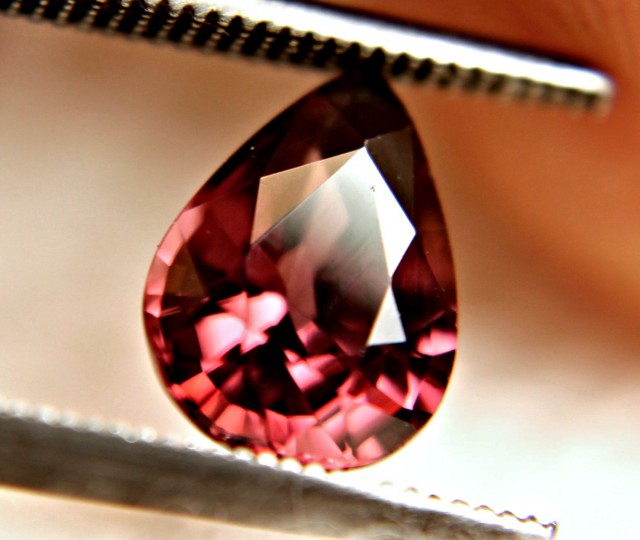Zircon Gemstone: Properties, Meanings, Value & More
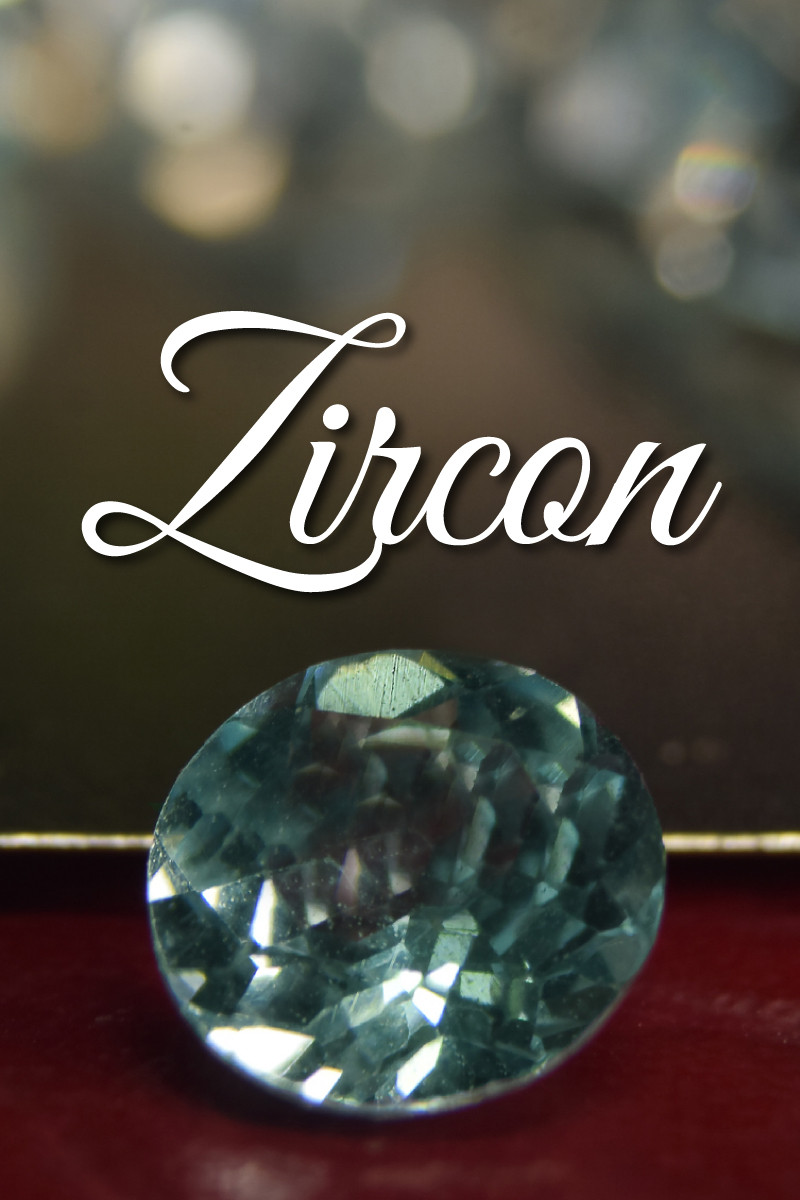 Zircon is a zirconium silicate gemstone with impressive fire, refraction, and color range. Historically, Australian zircon is the oldest mineral found on earth at 4.4 billion years old!
Zircon is a zirconium silicate gemstone with impressive fire, refraction, and color range. Historically, Australian zircon is the oldest mineral found on earth at 4.4 billion years old!
Besides its age, what is zircon known for?
Zircon is renowned for its intense coloring, great luster, and high refractive index. A higher refractive index means the stone reflects light from more angles. In other words: more sparkle!
With zircon’s sparkle comes impressive brilliance and “fire,” a gemological term for multi-colored flashes of light. You may recognize fire from another gem: diamond. In fact, zircon’s optical effects have led to centuries of confusion with diamonds.
What is special about zircon? Today we’ll take a deep dive into zircon’s unique properties and features, including how much a zircon is worth and what it can do for you!
Before we dive in, let’s cover some basics: what is zircon?

About Zircon Stone
Zircon is a transparent semi-precious gemstone that comes in a range of colors, from yellows and greens to the most popular: electric blue. Besides being a fan-favorite, the blue zircon stone commemorates multiple occasions.
Our winter babies get honored with a blue zircon birthstone for December! Along with your other birthstones, violet tanzanite, and blue-green turquoise, you’re ready for any winter soiree.
Do you know anyone celebrating an anniversary soon? Blue zircon is the traditional gemstone for the fourth wedding anniversary! Plus, yellow zircon is an alternate gemstone for the eleventh wedding anniversary, so why not gift some zircon jewellery to commemorate the occasion?
Speaking of love, zircon is the gemstone of Venus, the planet of love and relationships in astrology. Venus rules two zodiac signs, so zircon is a lucky zodiac stone for both Libra and Taurus!
Mineral Characteristics
Zircon is a zirconium silicate mineral, though some aspects in the zircon composition are usually substituted for other elements.
One unique zircon trait is the common presence of small amounts of radioactive substances, namely hafnium, uranium and thorium. These elements give zircon two more unique traits:
The ability to change its refractive index and density over time, and
Usefulness in determining the age of rocks or fossils
Clearly it’s an important mineral, but is zircon a real gemstone? Yes, it is!
The Zircon gemstone family includes jacinth (or hyacinth.) Jacinth historically referred to hessonite or topaz, but now we know it as a transparent reddish-brown zircon variety. Gemologists use the term jargon for gem-quality zircons that aren’t jacinth.
On the Mohs mineral hardness scale, zircon ranks at 7.5, below cubic zirconia. Are zircon and cubic zirconia the same thing?
Despite popular belief, cubic zirconia and zircon are not the same. For one, cubic zirconia is a synthetic gemstone made of zirconium oxide. Secondly, natural zircon is harder to come by and valued higher than cubic zirconia. Both stones are popular diamond simulants.
Besides colorless specimens, zircon has shades or mixtures of yellow, green, brown, red, and blue.
Want to know the rest of zircon’s properties? Check out the list below!
Zircon Specifications & Characteristics
Color: Colorless, blue, yellow, red, brown, or green
Crystal structure: Tetragonal
Luster: Vitreous to adamantine
Transparency: Transparent to opaque
Refractive index: Doubly refractive; 1.92-1.96 and 1.98-2.01
Density: 4.6-4.7
Cleavage: Indistinct on [110] and [111]
Fracture: Conchoidal to uneven
Streak: White
Chatoyancy: Sometimes present
Luminescence: Thermoluminescence; Cathodoluminescence; Fluorescence in some; Mustard-yellow in LW and SW
Pleochroism: Sometimes present; Weak; Stronger with heat treatment
Mineral properties? Check! What should we know about zircon spiritual meaning?
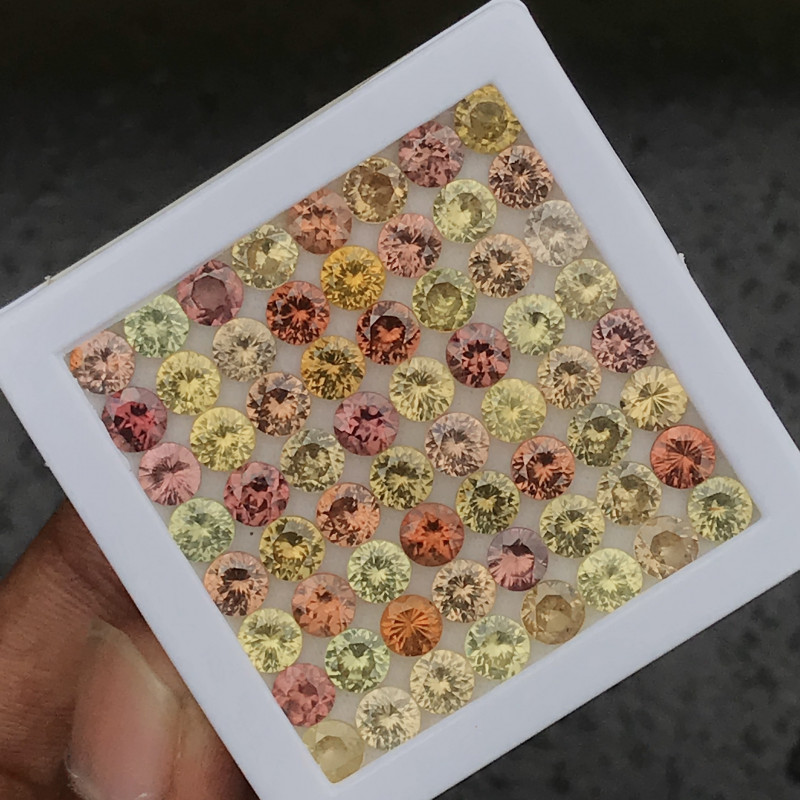
Zircon Meaning
Zircon’s name has two possible origins: the Arabic zarkun, meaning “bright or dark red,” or the ancient Persian word zargun, meaning “gold-colored.”
Zargun led to the gemological nickname, jargon, used for non-hyacinth zircons. The name hyacinth has origins in ancient Greek mythology!
Hyacinth is named after Hyacinthus, a mortal whose beauty caught the eye of Apollo, god of the sun and music. While learning under Apollo, Hyacinthus got fatally struck by a disc Apollo threw. Overwhelmed with guilt, Apollo turned Hyacinthus’ blood into the flower hyacinth.
Many scholars believe the Hyacinthus myth symbolizes death and rebirth. Therefore, we can interpret the hyacinth zircon gemstone meaning as the cycle of rebirth in nature, exemplified in the gem’s earthy tones.
In ancient Indian mythology, the sacred miracle-giving Kalpa Tree, or Kalpavriksha, had green zircon leaves. In various Indian religions, the Kalpa Tree grants wishes and helps people reach spiritual enlightenment.
In modern times, different zircon colors offer specific symbolism. Golden-yellow zircon often goes by the “Stone of Prosperity,” while red zircon purportedly wards off evil spirits. The white zircon meaning is commonly tied to purity and fidelity.
We’ve learned about the stone’s meanings, but what does zircon do spiritually?
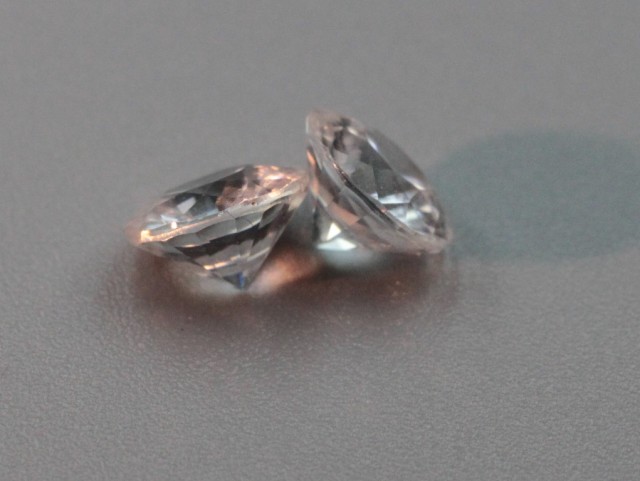
Zircon Healing Properties
All gemstones have certain energies that make them useful as healing crystals. Zircon's spiritual properties are plentiful, as each color offers new powers.
The most popular color is blue zircon, which joins other blue gemstones in symbolizing wisdom and sincerity. White zircon's meaning, like other white gemstones, is one of higher awareness and humility.
In general, zircon benefits people in many ways, including boosting energy, grounding you, and helping manifest your desires. What is zircon gemstone used for in spiritual healing?
Physical Healing
Physically, zircon can help to alleviate respiratory system issues, including asthma, bronchitis, or lung disorders, to name a few.
Additionally, some energy healers use zircon to aid spinal issues, particularly sciatic nerve disorders.
Emotional Healing
The zircon gemstone benefits anyone feeling surrounded by negativity. Zircon is said to attract beneficial people into your life while warding off toxic people or situations. Zircon crystals can also boost self-confidence, helping to clarify your purpose and go after it with vigor.
Chakra Healing
The chakras are seven energy centers in the body that help regulate your wellbeing and mental, spiritual, and emotional alignment. Since zircon comes in every chakra color, chakra healers use the stone for aligning all chakras. For targeted healing, you can use each color for its corresponding chakra:
Red or brown zircon: Root chakra
Orange zircon: Sacral chakra
Yellow zircon: Solar plexus chakra
Green zircon: Heart chakra
Blue zircon: Throat chakra
Purple zircon: Third eye chakra
Colorless zircon: Crown chakra
That covers all the zircon stone properties for healing, but how can we evaluate the stone in terms of price?
Zircon Gemstone Properties
Expert gemologists determine a stone’s value based on its particular value properties. In zircon’s case, the key factors are color, cut, clarity, treatments, and carat weight.
Color
Zircon color ranges from colorless zircon reminiscent of diamonds to earthy browns and reds to electric greens and blues.
What is the rarest color of zircon?
The rarest color is zircon blue, making it the most popular among consumers, with jewelry dealers reporting roughly 80% of zircons sold are blue.
One unique part of zircon’s color is its absorption spectrum. When using a spectroscope, you can see almost every color of the rainbow within a zircon.
High vs. Low Zircon
High zircons are stones that haven’t undergone changes from self-radiation. Low (or metamict) zircon has irradiated itself through a process called metamictization.
Both high and low zircons contain radioactive elements, but low zircons have undergone radioactive decay over thousands of years, which can eventually make the stone amorphous. High zircons are younger than low zircons, so the damage hasn’t occurred yet.
Low zircons are cloudy with brown-green, yellow-green, or orange hues. All other zircon colors fall under high or intermediate. Additionally, high zircon has a higher refractive index, density, and hardness than low zircon.
Cut
Zircon can be cut into faceted or un-faceted shapes. The most common faceted cuts for zircon are rounds and ovals, which best display zircon’s fire. Step cuts and mixed cuts are also common.
Zircon isn’t cut into cabochons often, except those that showcase a cat’s eye effect.
Clarity
Gemstone clarity grades rely on the number of visible inclusions in the stone. Under the colored gemstone clarity scale, zircon is Type II (usually included but eye-clean in high-quality specimens.)
Most included zircons with cloudy appearances are untreated. Nowadays, faceted zircon is almost always eye-clean, meaning it lacks visible inclusions to the naked eye.
While inclusions often lower zircon value, elongated parallel inclusions can create chatoyancy, also called the “cat’s eye” effect.
Treatments
Treatments are common if not routine for zircon, specifically heat treatments. Blue zircons almost always undergo heat treatments because they are generally naturally brown. Heat treatments also produce yellow or colorless zircon.
Because heat treatments are so common for zircon, they don’t affect the stone’s value as drastically as they would a naturally colorful gemstone like sapphire.
Carat Weight
Zircon forms in different sizes based on the stone’s color. Red and purple zircons are typically the smallest, while yellow and orange zircons can weigh up to 5 cts. Blue and green zircons have the largest range, from 1-10 cts.
As a zircon’s size increases, quality tends to decrease. Before World War II, blue zircon was available from 15-25 cts, but the supply has become scarce over time.
On that note, let’s explore what else played a role in zircon’s history!
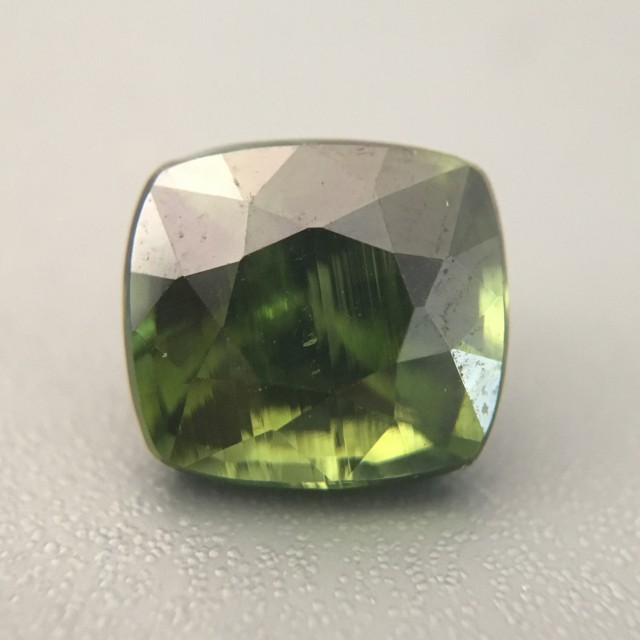
Zircon History
Zircon holds a historical record as the world’s oldest gemstone. However, we didn’t know this until 2014, when a zircon found in Western Australia turned out to be roughly 4.4 billion years old.
To put zircon’s age into perspective, scientists estimate the moon formed around 4.5 billion years ago. However, zircon has a rich history of its own!
The earliest zircon references come from ancient religious texts. The Bible names zircon as one of the twelve gemstones on Aaron’s Breastplate, a breastplate worn by high priests of Israel.
Ancient religious scripture from India mentions zircon in relation to Kalpavriksha, or Kalpa Tree, a divine wish-granting tree in Hinduism, Buddhism, and Jainism. According to ancient Hindu poets, the tree had green zircon leaves, among other crystal features like gold roots and pearl flowers.
Beyond religious connotations, folks in Italy and Greece started using zircon crystal as early as the 6th century. By the Middle Ages, zircon was popular for its metaphysical benefits, including warding off evil, treating insomnia, and inviting success.
Near the end of the Middle Ages, the art of faceting gemstones began and white zircon from France became a popular diamond substitute throughout Europe.
In 1789, German chemist Martin Heinrich Klaproth discovered the new element zirconium from a zircon sample. Klaproth’s research kicked off a wave of scientific discoveries that eventually led to zircon uses in ceramics, metal castings, and even air purifiers!
By the 1800s, zircon gained popularity in Victorian jewelry. Blue zircons graced English estate jewelry, while cloudy dark zircons became popular in mourning jewelry.
What happened before we discovered the stone? How did zircon form?

Zircon Stone Origins & Sources
As you know, zircon takes thousands of years to form, though some speculate millions of years. Zircon forms deep within Earth’s crust at extreme temperatures.
While scientists assumed zircons formed from volcanic eruptions or tectonic plates shifting, research from 2014 suggests otherwise. The researchers claim a huge meteor impact likely occurred 3.5-4.5 billion years ago, melting the Earth’s crust near the crater to form lakes of lava. The newly heated crust would have created crystallizing conditions for zircon.
Makes you glad you didn’t live back then, right?
You can find zircon in igneous, metamorphic, and sedimentary rocks. Conditions with temperatures above 400 degrees Celsius (752 degrees Fahrenheit) and enough trace elements can create red, purple, or pink zircons.
Once it emerges from Earth’s crust, where is zircon found?
Mining Locations
Australia and South Africa are the top producers of zircon worldwide, with Australia producing 27% of the world’s zircon and South Africa producing 30%.
Sri Lanka is another leading source of zircon, known for their fine green zircons and colorless zircons, called “Matura diamonds” after the deposit in Matura.
Other nations that produce zircon gemstones include:
Bolivia
Brazil
Burma
Cambodia
Canada
China
India
Madagascar
Myanmar
New Zealand
Nigeria
Norway
Tanzania
Thailand
Ukraine
USA (Florida & Georgia)
Vietnam
So, we know it’s widely available, but is zircon a valuable stone? Read on to find out!
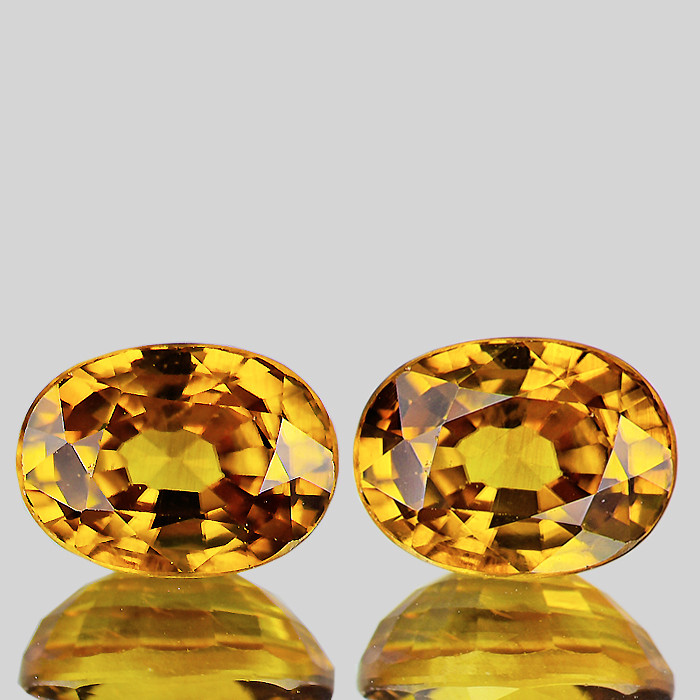
Zircon Price & Value
Considering that diamonds fall in higher price points and zircons closely resemble them, you may wonder: is zircon stone expensive? While zircons are rarer than diamonds, the zircon gemstone price is significantly lower than diamonds.
The zircon stone price per carat differs by color, clarity, and carat weight. The highest-valued colors are vibrant red, blue, and green.
High-quality blue zircon gemstones weighing 5-10 cts range between $200-$300 per carat while those over 10 cts cost $300-$400 per carat.
Rare green zircon, if eye-clean and bright green, can fetch $250-$300 per carat.
Red zircons are less expensive, at $75-$125 per carat.
On the more affordable end, we have honey zircon (golden-colored) at $50-$100 per carat. If you’re looking for an affordable diamond swap for your engagement, the white zircon ring price comes in around $35-$50 per carat!
Zircon Care and Maintenance
Zircon gemstones are fairly durable, but their cleavage leaves them vulnerable to breakage. To avoid fractures, remove your zircon ring or other zircon jewelry before any rigorous activities.
Prolonged exposure to bright light, particularly sunlight, can cause color fading. Heat-treated zircons may even shift back to their original colors with enough light exposure, so it’s best to store your zircon away from windows or harsh lamps.
You can clean zircon with a soft brush and warm, soapy water, but you’ll want to avoid ultrasonics and steam cleaners.
Feeling Zesty About Zircon?
Most gemologists and collectors are well-versed in zircon’s unique qualities, but the stone is underrated in the overall gemstone market — largely because of its namesake being falsely associated as cubic zirconia. Besides being an affordable diamond alternative, zircon offers one-of-a-kind properties like no other widely available gemstone.
Zircon’s color range, brilliant sparkle, and historical status make this gemstone the perfect gift at a great price. Simply wearing a zircon necklace means you’re wearing a piece of history! What’s better than that?
Looking for a gorgeous, underrated gem? Find your perfect zircon gemstone today!
Was this article helpful?
4 people found this article helpfulRoss Sedawie
- Written - 27th Jun 2010
- Edited - 1st Aug 2023

